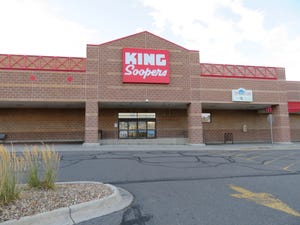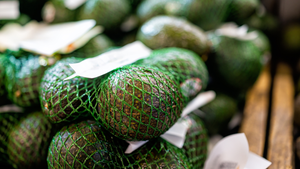PRODUCE SECTIONS URGED TO STRENGTHEN EFFICIENCYPRODUCE SECTIONS URGED TO STRENGTHEN EFFICIENCY
SANTA BARBARA, Calif. -- Every department in the supermarket is searching for ways to trim costs and boost efficiency.The produce department, viewed by some as slow to adapt to new ways of doing business, may be ahead of the game due to the need to move highly perishable products fast. Still, while there is cause for some back-patting, there is plenty of room to expand on the efficiencies inherent
July 11, 1994
TONY SPLEEN
SANTA BARBARA, Calif. -- Every department in the supermarket is searching for ways to trim costs and boost efficiency.
The produce department, viewed by some as slow to adapt to new ways of doing business, may be ahead of the game due to the need to move highly perishable products fast. Still, while there is cause for some back-patting, there is plenty of room to expand on the efficiencies inherent in the produce business. That is the message that emerged from the joint annual produce conference here late last month of the Food Marketing Institute, Produce Marketing Association, United Fresh Fruit and Vegetable Association and the National-American Wholesale Grocers' Association.
"We're a little bit ahead in some areas, namely with continuous replenishment and just-in-time arrivals," said conference chairman Bob DiPiazza, vice president of produce operations at Dominick's Finer Foods, Northlake, Ill. "We've been working with that for years, while our non-perishables colleagues have worked hard at trying to take inventory out of the system to reduce costs.
"We've also not had to deal with layers of promotional funds and costs that have been tacked on to the cost of goods. So in those aspects we're really positioned well."
According to conference speakers, produce departments would be well served to adopt some of the newer models to reduce inventories and shrink and to increase sales and profit
margins being followed by the grocery department.
The key to implementing such models as Efficient Consumer Response and category management in the produce department, conference speakers said, is to build realistic partnerships between buyers and suppliers in which both parties benefit in good times and bad.
Joe Boskovich, vice president of Boskovich Farms, Oxnard, Calif., a produce grower-shipper, commented that not all parties see a partnership as a two-way street, and therefore are not willing to share unexpected cost increases.
His company offers some buyers fixed pricing year-round on some items. Problems often develop, he said, when the actual cost of the product rises above the agreed-upon price.
Boskovich said that some of his customers will work with him to cover the added costs, while others "are licking their chops because they're paying $7 in a $14 market."
This type of environment won't foster relationships that can lead toward greater efficiencies and cost-cutting measures, speakers said.
"What's going to make partnerships win is the fact that we've increased sales, reduced our costs, increased our profits and provide our customers with recognizable value," said Bill Davila, president emeritus of Vons Cos., Arcadia, Calif.
Davila and Boskovich were panelists in a session that focused on the major issues facing the produce business.
ECR is a grocery-industry strategy in which suppliers and retailers work together to increase the value of products by reducing time and costs associated with distribution. Such a system is dependent upon accurate scanning data and computer assisted ordering and reporting procedures.
Bob Urban, managing partner of U.S. Marketing Services, Sonoma, Calif., said there are great opportunities for using ECR at store level to increase sales and profits, but access to good sales data and computing resources is essential. He, as well as other speakers, recommended industrywide adoption of standardized price lookup numbers to improve the gathering of sales and movement data through accurate scanning of produce.
"The biggest gains of ECR will be made at store level," Urban said, "in terms of improving consumer satisfaction by making shopping more convenient, making assortments greater and making the produce shopping experience a better one."
He added that to integrate ECR principles into the produce department retailers must have a detailed plan, establish adequate priorities, limit the approach to individual categories or items and allocate sufficient time.
Dominick's DiPiazza agreed: "In our industry, anytime we try to do some meaningful analysis it's a moving target we try to get our arms around. We need support throughout the organization.
"If we're going to be able to do some of this analysis we're going to need systems support and staff support. We're going to need the organization behind us 100% if we're going to try to manage our business with less intuition and more hard data."
About the Author
You May Also Like




